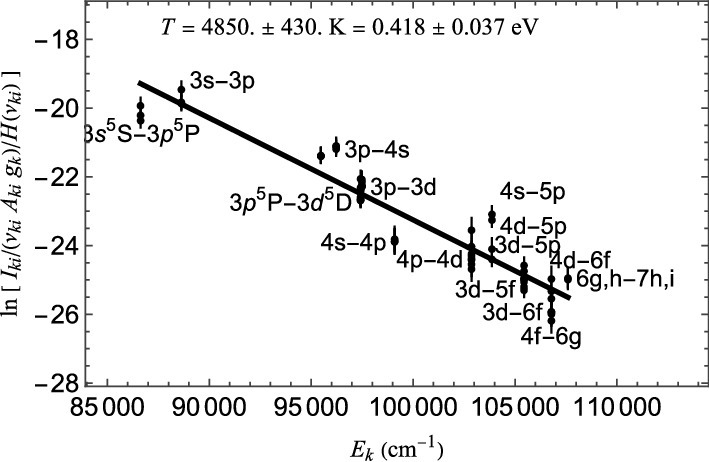https://doi.org/10.1140/epjd/s10053-024-00837-3
Regular Article - Atomic Physics
Modified quantum defect theory: application to analysis of high-resolution Fourier transform spectra of neutral oxygen
1
Voronezh State University, University Sq. 1, 394018, Voronezh, Russia
2
P. G. Demidov Yaroslavl’ State University, Sovetskaya Str. 14, 150003, Yaroslavl’, Russia
3
J. Heyrovský Institute of Physical Chemistry, Academy of Sciences of the Czech Republic, Dolejškova 3, 18223, Prague 8, Czech Republic
Received:
6
February
2024
Accepted:
27
March
2024
Published online:
17
April
2024
The quantum defect theory (QDT) has been successfully used to describe processes involving high-excited (Rydberg) states of atoms and molecules with a single valence electron over closed shells. This study proposes a modification of QDT to describe the low-energy excited states of a more complex atom (oxygen) which are responsible for its infrared (IR) spectrum. The radial wavefunctions of low-excited electron states include the quantum defect dependence on energy which is derived from the whole spectral series, in contrast to the highly excited Rydberg levels, whose quantum defects are determined by the individual level energies. Our method was applied to calculate the transition probabilities in the neutral oxygen spectra in discharge plasma measured using high-resolution time-resolved IR Fourier transform spectroscopy. The Boltzmann plots resulting from the experimental spectra prove that the modified QDT approach is an adequate method for calculating atomic dipole transition moments.
Copyright comment Springer Nature or its licensor (e.g. a society or other partner) holds exclusive rights to this article under a publishing agreement with the author(s) or other rightsholder(s); author self-archiving of the accepted manuscript version of this article is solely governed by the terms of such publishing agreement and applicable law.
© The Author(s), under exclusive licence to EDP Sciences, SIF and Springer-Verlag GmbH Germany, part of Springer Nature 2024. Springer Nature or its licensor (e.g. a society or other partner) holds exclusive rights to this article under a publishing agreement with the author(s) or other rightsholder(s); author self-archiving of the accepted manuscript version of this article is solely governed by the terms of such publishing agreement and applicable law.





